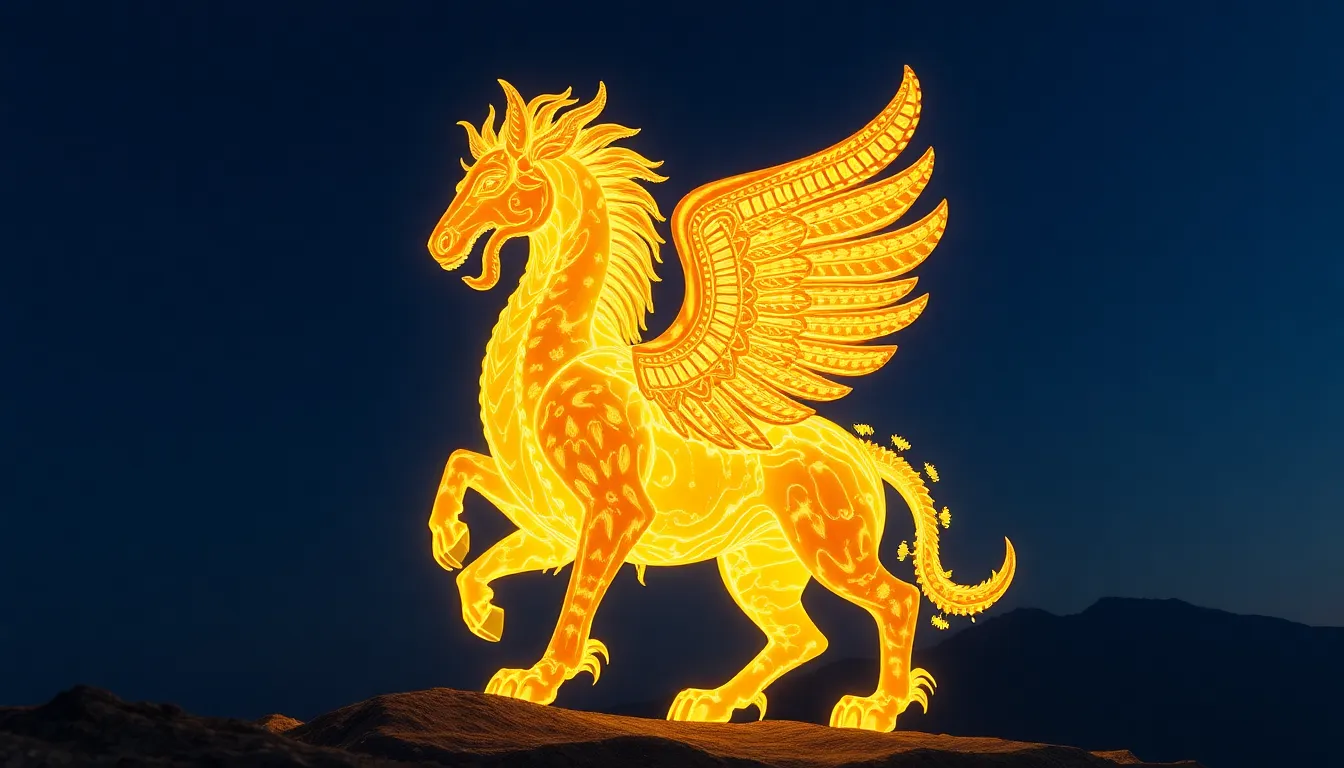The Chimera and Its Representation of the Unknown in Mythology
I. Introduction
The Chimera, a formidable creature from Greek mythology, embodies the essence of the unknown. This mythological beast is often depicted as a monstrous hybrid, typically featuring the head of a lion, the body of a goat, and a serpent for a tail. The Chimera serves not only as an exciting element of ancient tales but also as a powerful symbol of humanity’s fear of the unfamiliar and the chaotic.
Mythological creatures like the Chimera play a crucial role in reflecting cultural fears and uncertainties. They serve as mirrors to the anxieties of the societies that create them, enabling a deeper understanding of human psychology and cultural history. In this article, we explore how the Chimera represents the unknown and the challenges faced by humanity in confronting its fears.
II. Historical Context of the Chimera
The origins of the Chimera date back to ancient Greek mythology, where she is depicted as a fearsome creature that terrorized Lycia. The creature is said to have been born from the monstrous union of the fire-breathing Typhon and Echidna, a half-woman, half-snake being. This lineage alone suggests the Chimera’s nature as a being of chaos and destruction.
Characteristics of the Chimera include:
- Composite physique: Head of a lion, body of a goat, and tail of a serpent.
- Fire-breathing capabilities, representing destruction.
- An unpredictable and fearsome presence, symbolizing chaos.
Throughout history, the depiction of the Chimera has evolved. In ancient texts such as Homer’s “Iliad” and works by later poets, the Chimera’s image is transformed, often reflecting the cultural sentiments of the time. Additionally, the Chimera has been represented in various forms of art, from vase paintings to sculpture, showcasing her significance in Greek culture.
III. The Chimera as a Symbol of the Unknown
The Chimera’s composite nature offers a rich ground for interpretation. As a hybrid creature, she embodies the fears and uncertainties associated with the unfamiliar. Each part of her body can be seen as a representation of different aspects of existence—strength, unpredictability, and primal instincts.
Hybrid creatures like the Chimera often symbolize humanity’s fears of what lies beyond the known and understood. They serve as reminders of the chaos that can emerge when boundaries are blurred. The Chimera’s existence is a reflection of the human psyche’s struggle to confront chaos and the unknown.
Moreover, the Chimera has had a notable impact on the human psyche, particularly in the way she represents chaos and fear. Her very nature evokes a sense of dread, pushing individuals to confront their own fears and uncertainties.
IV. The Chimera in Literature and Art
In ancient Greek literature, the Chimera serves as a focal point in tales of heroism and adventure. One of the most famous stories involves Bellerophon, a hero who rides the winged horse Pegasus to confront and slay the beast. This narrative captures the struggle between humanity and the unknown, with the Chimera symbolizing the obstacles that must be overcome.
The Chimera’s representation evolved during the Renaissance, where artists began to explore her image in greater depth. Works by painters such as Peter Paul Rubens depicted the Chimera in dramatic and dynamic forms, emphasizing her monstrous and chaotic nature. In modern art, the Chimera continues to inspire, appearing in various forms that reflect contemporary fears and challenges.
In contemporary storytelling and media, the Chimera’s influence is evident in films, books, and video games. She appears as a powerful adversary, often embodying the themes of chaos, fear, and the unknown that resonate with audiences today.
V. The Chimera and Human Fear
Exploring the themes of fear and uncertainty in mythology, the Chimera stands out as a representation of personal and societal anxieties. Her fearsome nature encapsulates the struggles that individuals and cultures face when confronted with the unknown.
Some themes to consider include:
- The Chimera as a metaphor for internal struggles and fears.
- The societal implications of confronting the unknown, such as technological advancements and globalization.
- Case studies of cultures that have faced their own “Chimeras,” such as societal changes and existential crises.
In many ways, the Chimera reflects humanity’s ongoing battle with fear and uncertainty, urging individuals to confront their own personal monsters.
VI. Comparisons to Other Mythological Creatures
The Chimera shares similarities with other hybrid beings in mythology, such as griffins and centaurs. These creatures often embody the duality of existence, merging human, animal, and divine traits, thus representing the unknown and the complexities of life.
Different cultures depict their own versions of the unknown through mythological creatures, highlighting universal themes of fear and chaos. For instance:
- The griffin, a guardian creature in various mythologies, symbolizes strength and protection.
- The centaur represents the struggle between civilization and primal instincts.
These comparisons illustrate how mythological creatures serve as instruments for confronting existential fears across cultures and time periods.
VII. The Chimera in Modern Culture
The Chimera has seen a resurgence in modern culture, appearing in various forms of entertainment, including films, books, and video games. This resurgence often reflects contemporary challenges, such as technology, identity, and globalization.
As a metaphor, the Chimera speaks to the complexities of modern life, representing the multifaceted challenges individuals face today. Public fascination with the unknown continues to thrive, making the Chimera’s story relevant in discussions about fear, identity, and change.
VIII. Conclusion
In summary, the Chimera represents not only a significant figure in Greek mythology but also a profound symbol of the unknown in human experience. Her story resonates across cultures and time periods, reflecting the enduring appeal of mythological creatures in confronting humanity’s fears.
As we continue to explore the unknown, the lessons from the Chimera’s story remind us of the importance of embracing uncertainty and confronting our fears with courage and resilience. The Chimera stands as a testament to the complexity of the human experience and the challenges we face in our journey through life.




